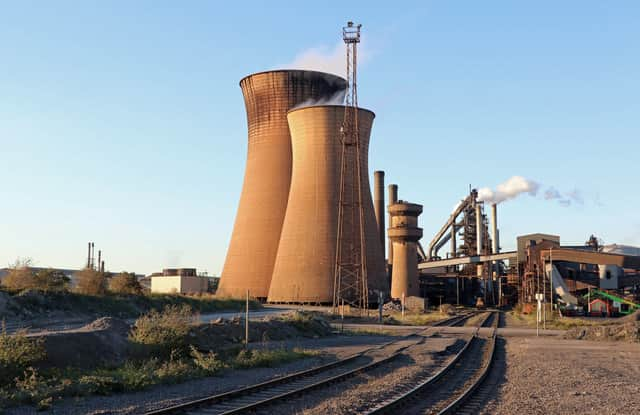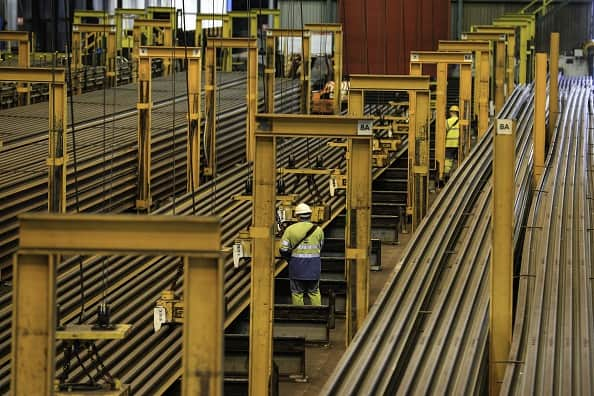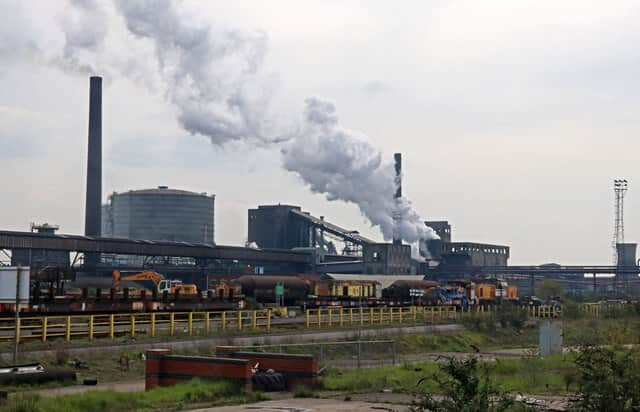British Steel Scunthorpe - a history of the plant as company confirms closure plans with 2,000 jobs at risk


The landscape of a North Lincolnshire town dependent on the steel industry could soon change dramatically. British Steel has announced plans to close its Scunthorpe plant which could put up to 2,000 jobs at risk in the area.
The plant's cooling towers, chimneys, and conveyors have formed an iconic part of Scunthorpe's skyline for more than 150 years. It has a history that dates back much further than its time being operated by British Steel.
Advertisement
Hide AdAdvertisement
Hide AdNew £1.25bn plans have been put forward to replace British Steel blast furnaces in Scunthorpe and Teesside with two electric arc furnaces. The plans - which are still subject to government approval - are part of a proposal to make British Steel "a clean, green and sustainable business".
The business, which is owned by China's Jingye Group, said the new furnaces could be in operation by late 2025. Unions representing steelworkers estimate the replacement could ultimately lead to the loss of 1,500 to 2,000 jobs. In light of this massive change, NationalWorld takes a look back at the history of the plant.


When did steel production start in Scunthorpe?
Steel production has long been a staple of the Scunthorpe community. As the British Steel website reads: "Not many companies can claim to have generations of families dedicating their working lives to one company, one industry. Steel gets into your blood and this drives the passion of our people."
But steel production in Scunthorpe dates back much further than British Steel's takeover in the 1960s. Once middle Lias ironstone was found to the east of Scunthorpe, works to set up plants soon followed. Much of the initial discovery is credited to industrialist Rowland Winn.
Advertisement
Hide AdAdvertisement
Hide AdConstruction of the North Lincoln Ironworks began in 1866 and in 1872 Redbourn Hill Iron and Coal Company was established with its two blast furnaces blown in three years later. In 1876, the Appleby Ironworks blew in its first blast furnace.
Progress was rapid and 1890 proved to be a big year as steel manufacturing started in Scunthorpe. In 1911, construction work started on John Lysaght's Iron and Steelworks with production underway the following year. The following decades saw incredible growth with steel being a major component in infrastructure projects in the UK and further afield.


When did British Steel take over the site?
In 1967, the ‘Iron and Steel Act’ brought into public ownership about 90% of British steelmaking and a few months later, in July, BSC (British Steel Corporation) was formed from the UK's 14 main steel producing companies. This allowed for the reshaping of a vital UK industry after years of insufficient investment.
One of the largest investments for BSC’s Scunthorpe site was the so-called ‘Anchor Project’. Costing around £235 million, the scheme included building one of Europe's biggest plants at the time. Other facilities were built to upgrade the site and in May 1974, Queen Elizabeth II officially opened the site. But by the following year, BSC was still facing hefty loses which led to significant closures taking place by the end of the decade.
Advertisement
Hide AdAdvertisement
Hide AdThe start of the 1980s was heralded by a 13-week national steel strike. The strike was the result of the Corporation's pressure for change and a pay dispute. By the end of 1980, BSC had completed the closure of a number of outdated and loss-making plants and reduced its workforce to 130,000 – compared with a total of 268,500 employees at the time of nationalisation.
Eventually, in December 1987 the UK Government formally announced its intention to privatise the British Steel Corporation. The British Steel Act of 1988 transferred the assets of the Corporation to 'British Steel'.
British Steel’s headquarters are in Scunthorpe and the company has rolling mills in Teesside and Skinningrove in the UK. It also operates in Alblasserdam in the Netherlands. The company was bought by leading Chinese multi-industrial company Jingye Group in March 2020. This ushered in a new era for the company.
Chief executive of the Jingye Group, Xijun Cao, said the firm was not able to keep the blast furnaces and meet environmental commitments. He said: "We have engaged extensively with the public and private sector to understand the feasibility of producing net zero steel with our current blast furnace operations. However, thorough analysis shows this is not viable."
Advertisement
Hide AdAdvertisement
Hide AdRoy Rickhuss, general secretary of Community, the specialist trade union representing UK steelworkers, said he was "deeply concerned" by the plans, which he described as "dangerous and foolhardy". He added: "The plans that British Steel has announced, combined with Tata Steel's plans, would leave the UK unable to make steel from raw materials and dangerously exposed to international markets."
Comment Guidelines
National World encourages reader discussion on our stories. User feedback, insights and back-and-forth exchanges add a rich layer of context to reporting. Please review our Community Guidelines before commenting.
